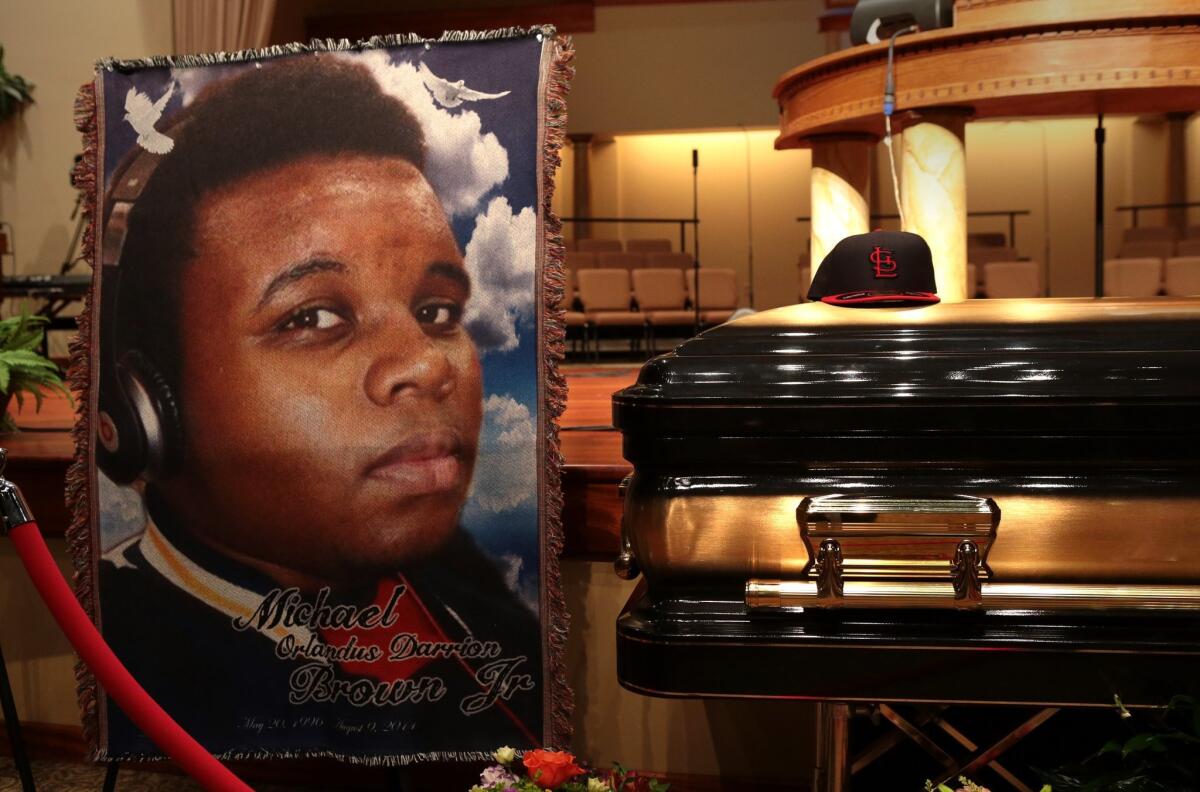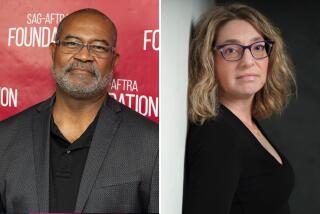Column: Police expectations damage black men’s realities

- Share via
New York City’s Eric Garner is the new Michael Brown. Both died at the hands of police, because they committed minor crimes, because they ran or resisted arrest, but mostly because they were both big, black men.
Their deaths — and the refusal by grand juries to indict the officers involved — reflect a pervasive, deep-seated reliance on dehumanizing stereotypes:
Black men are dangerous, violent and criminally inclined.
You don’t have to be a bigot to have that image embedded in your psyche. Growing up in America is enough. Our country’s history, culture and social divide feed a subconscious attachment to stereotypes, even in the minds of people with no measurable racial bias.
Decades of research have demonstrated that a mere subliminal flash of a black man’s face can make us fear the worst — to evaluate ambiguous behavior as aggressive, to miscategorize harmless objects as weapons, to shoot quickly and to inappropriately dispatch a perceived threat.
In video game experiments requiring split-second judgments, subjects — no matter their race, age or attitudes — are quicker to fire at an armed black man than at a white man carrying a gun, and more likely to shoot unarmed blacks than unarmed whites.
That raises criminal justice issues that won’t be resolved by body cameras. It’s a problem centuries in the making, and belongs to all of us.
::
Ferguson police officer Darren Wilson told the grand jury he had no choice but to shoot Mike Brown:
Brown’s face resembled “a demon.” Brown’s body was so strong that Wilson — 6’4” and 210 pounds — felt like a 5-year-old battling Hulk Hogan. Brown was so worked up, he made a “grunting” sound as he charged. And though Brown was unarmed, Wilson thought the 18-year-old could kill him with a punch.
That description, from Wilson’s testimony, sounds more like a jungle encounter than a police stop gone wrong in a St. Louis suburb.
Wilson’s language evoked stereotypes that primed the jury to decide that lethal force was a reasonable response in this confrontation with a massive beast making animal noises.
Those stereotypes were once employed to justify slavery: It’s easier to brutalize a man if you deny his humanity.
They are still in play today. They help explain why Ferguson police let Brown’s body lie uncovered in the street for hours, as blood pooled around his head. And why police in New York City discounted Garner’s pleas for help, as he suffocated on the sidewalk.
It wasn’t just a chokehold that killed Garner. It was an unconscious sort of callousness that allowed those officers to tune him out; he was a problem, not a person.
It’s hard for me to watch the cellphone video of police officers tussling with Garner on a Staten Island sidewalk. They were trying to arrest him for selling loose cigarettes, a misdemeanor offense. Garner objected, the cops moved in, one grabbed him around the neck from behind and held on while a trio of officers wrestled the 350-pound man down.
“I can’t breathe,” Garner gasped again and again, as officers pinned him to the ground. By the time an ambulance arrived, he was in cardiac arrest. The coroner — relying on science, not stereotypes — ruled his death a homicide. But a grand jury declined to indict.
::
If we’re going to have that national conversation about race that pundits keep calling for, we’re going to have to confront unpleasant truths about the power of the stereotypes that we carry around in our heads.
“Research shows that people associate ‘blackness’ with ‘threat’ in study after study,” says Stanford professor Jennifer Eberhardt. “It’s not something that is just about the police. It’s not something that is just about white people. It’s a function of how we’re socialized.”
Eberhardt is my sister-in-law. She was awarded a MacArthur “genius” grant for her research into the ways stereotypes influence the justice system. She has more than a scholarly interest, as the mother of three boys who will grow up to be black men.
She’s been working with police departments to help officers recognize and minimize the risks of stereotyping.
If research participants can be induced by the millisecond flash of a black face to mistake a wallet for a gun, imagine what happens in the minds of officers immersed in a world where race and crime routinely intersect. Where every day means hours on patrol with the radio blaring suspects’ descriptions: male black, male black, male black.
“They are primed with that association for years and years,” Eberhardt said. “Studies show that what we’re expecting to see is what we think we see.”
Perhaps that’s why a 12-year-old playing with a toy gun at a Cleveland park was shot to death by an officer dispatched to look for a black man wielding a gun. The officer took just two seconds to decide to fire on Tamir Rice. He said he thought the boy was 20 years old.
There are remedies, beyond body cameras, that law enforcement can deploy: better training, more transparency, tighter rules on use of force; more respect and relationship-building, and less stop-and-frisk.
We need a commitment to reset our broken justice system, so the value of a life doesn’t depend on the color of someone’s skin.
Twitter: @sandybanksLAT
More to Read
Sign up for Essential California
The most important California stories and recommendations in your inbox every morning.
You may occasionally receive promotional content from the Los Angeles Times.











